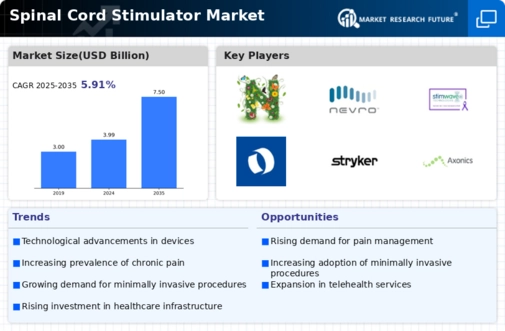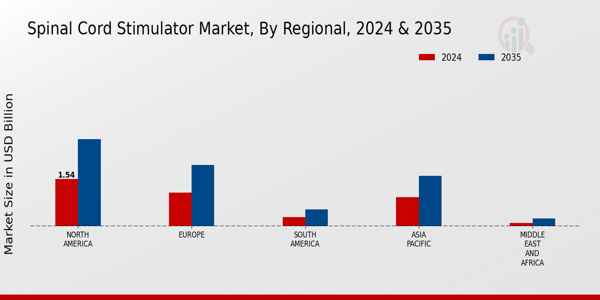Spinal Cord Stimulator Size
Spinal Cord Stimulator Market Growth Projections and Opportunities
The Spinal Cord Stimulator market segment is projected to be worth USD 4.1 Billion by 2030 up to 8.8% CAGR from 2022 through 2030. The Spinal Cord Stimulator (SCS) Market is shaped by several factors that pull together and foster its expansion. Among the many factors contributing to the growth of the pain management market is the rising burden of chronic pain cases and growing demand for non-pharmacological measures of pain control. In the search for alternatives to traditional pain remedies, spinal cord stimulation has become an alternative therapy that successfully relieves long-term pain. With technology innovations in SCS, new device forms, enhanced programming and wider indications, it is turning out to be a promising treatment option for a wider scope of people.
The SCS market is regulated by certain factors to bring about the safety, efficacy, and compliance of the devices with spinal cord stimulators. The most stringent of the regulations pertain to the approval, manufacturing, and usage of these medical devices and consequently creating the framework of responsible industry practices and patient safety. These regulations ensure also the reliability of SCS procedures while building confidence in healthcare professionals and people in chronic pain too.
The evolution of neuromodulation technologies contributes to these changing dynamics in the SCS marketplace. The ongoing development of next-generation SCS devices that incorporate high-frequency stimulation, closed loop systems and wireless connectivity options strengthen the precision and personalization of pain relief treatments. These technical innovations are intended to help individual clinical cases and improve the results of spinal cord stimulation, which in turn will contribute to the development of technology within the industry.
Economic parameters, for instance, healthcare budgets, affordability of the SCS technologies and cost-effectiveness of pain management methods all play a role in the uptake of spinal cord stimulators. The frontal charges for SCS procedures and devices may not be similar, however the prospect for long term pain relief, reduced health service utilization and enhanced quality of life make them attractive to the healthcare providers and individuals alike who are looking for alternative methods to drugs for pain relief. Economic factors often determine to a large extent, how the market trends emerge and how advanced SCS technologies are made available.

















Leave a Comment